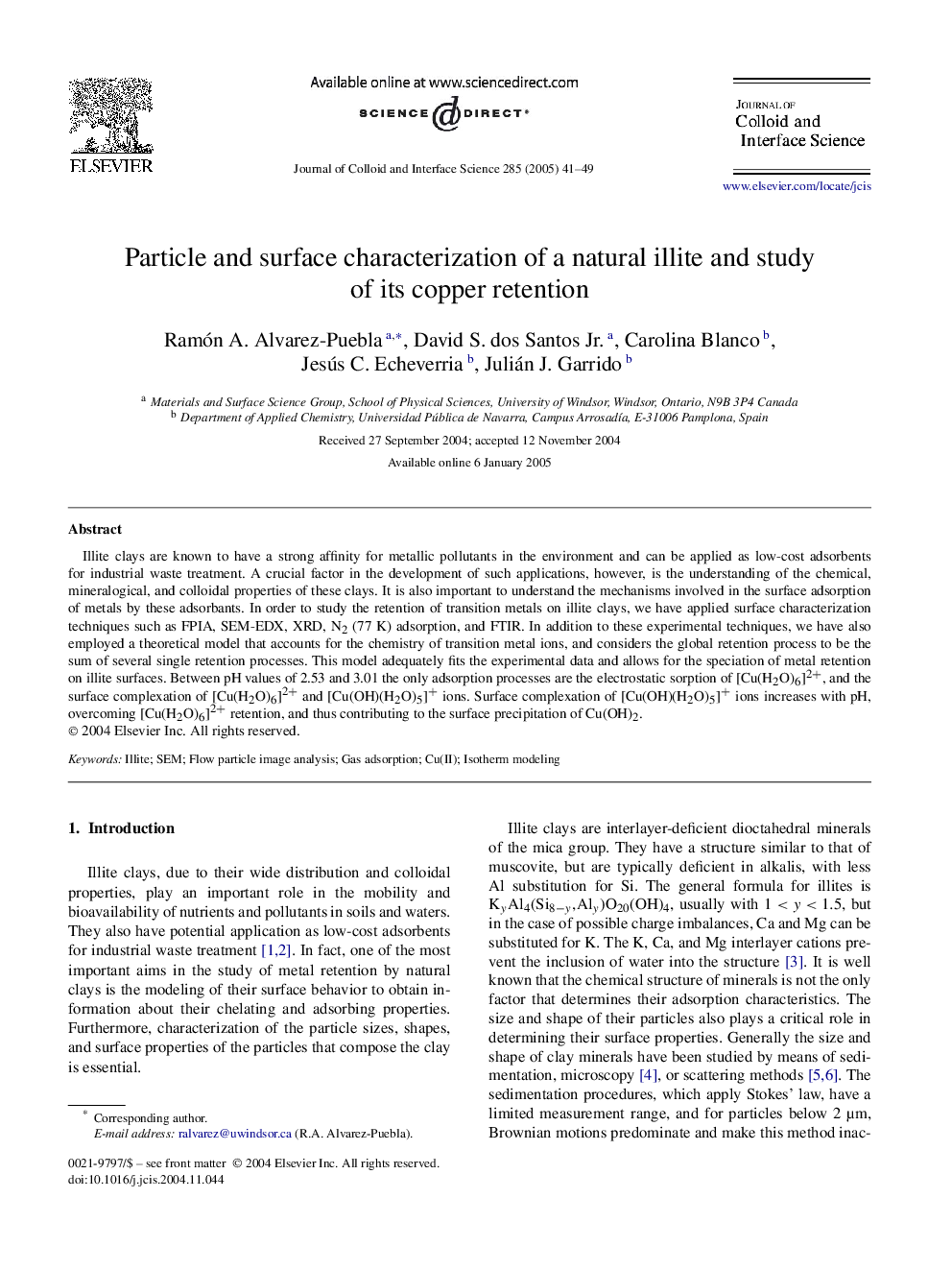| Article ID | Journal | Published Year | Pages | File Type |
|---|---|---|---|---|
| 10378032 | Journal of Colloid and Interface Science | 2005 | 9 Pages |
Abstract
Illite clays are known to have a strong affinity for metallic pollutants in the environment and can be applied as low-cost adsorbents for industrial waste treatment. A crucial factor in the development of such applications, however, is the understanding of the chemical, mineralogical, and colloidal properties of these clays. It is also important to understand the mechanisms involved in the surface adsorption of metals by these adsorbants. In order to study the retention of transition metals on illite clays, we have applied surface characterization techniques such as FPIA, SEM-EDX, XRD, N2 (77 K) adsorption, and FTIR. In addition to these experimental techniques, we have also employed a theoretical model that accounts for the chemistry of transition metal ions, and considers the global retention process to be the sum of several single retention processes. This model adequately fits the experimental data and allows for the speciation of metal retention on illite surfaces. Between pH values of 2.53 and 3.01 the only adsorption processes are the electrostatic sorption of [Cu(H2O)6]2+, and the surface complexation of [Cu(H2O)6]2+ and [Cu(OH)(H2O)5]+ ions. Surface complexation of [Cu(OH)(H2O)5]+ ions increases with pH, overcoming [Cu(H2O)6]2+ retention, and thus contributing to the surface precipitation of Cu(OH)2.
Related Topics
Physical Sciences and Engineering
Chemical Engineering
Colloid and Surface Chemistry
Authors
Ramón A. Alvarez-Puebla, David S. Jr., Carolina Blanco, Jesús C. Echeverria, Julián J. Garrido,
